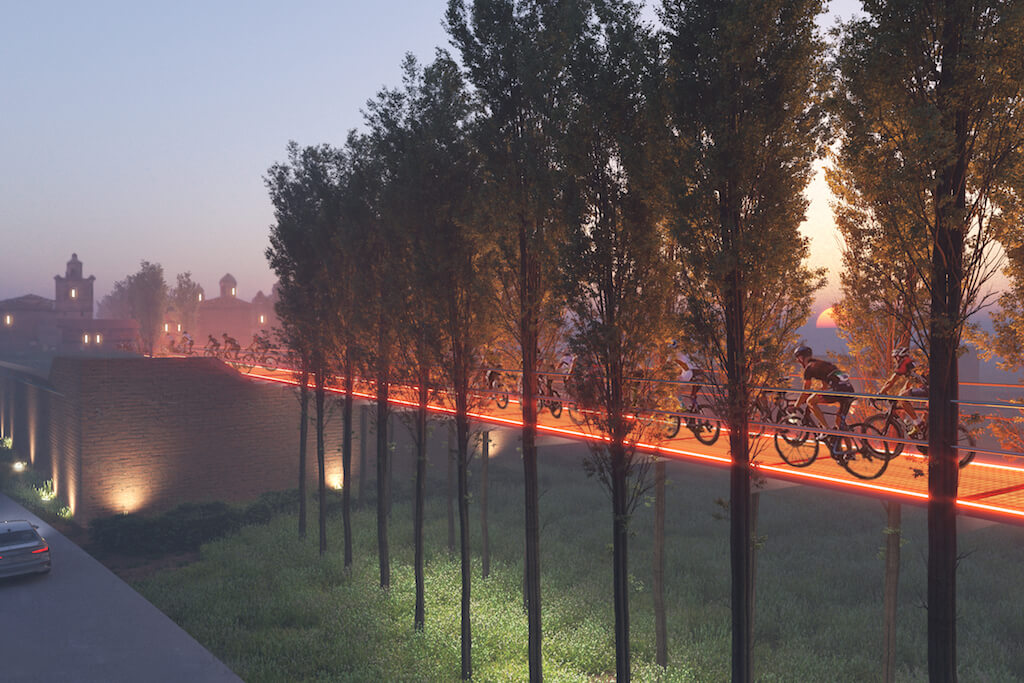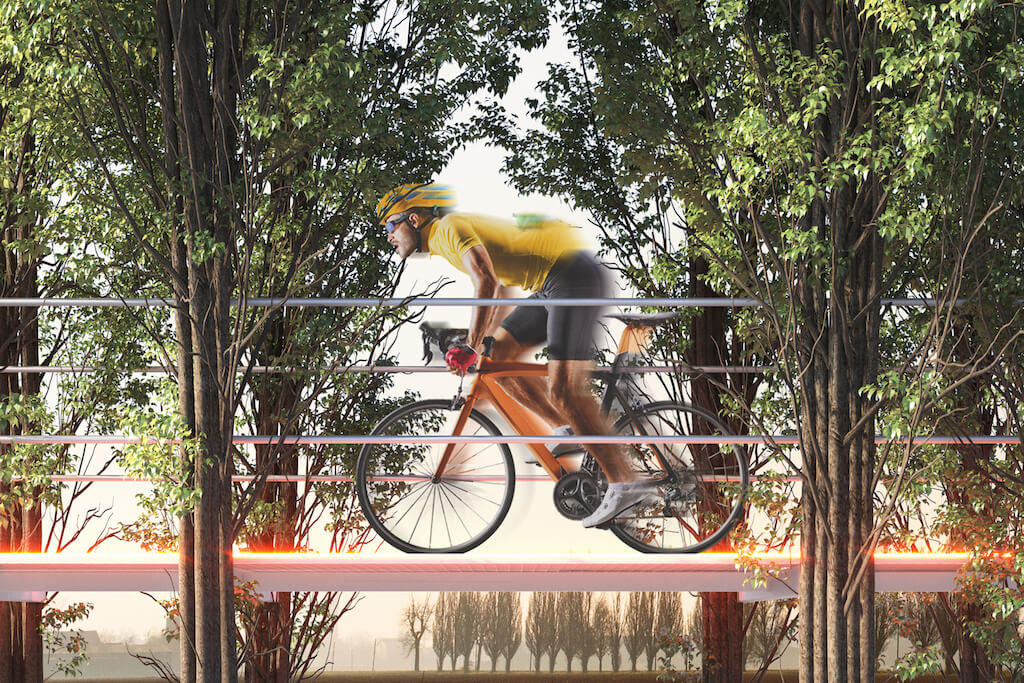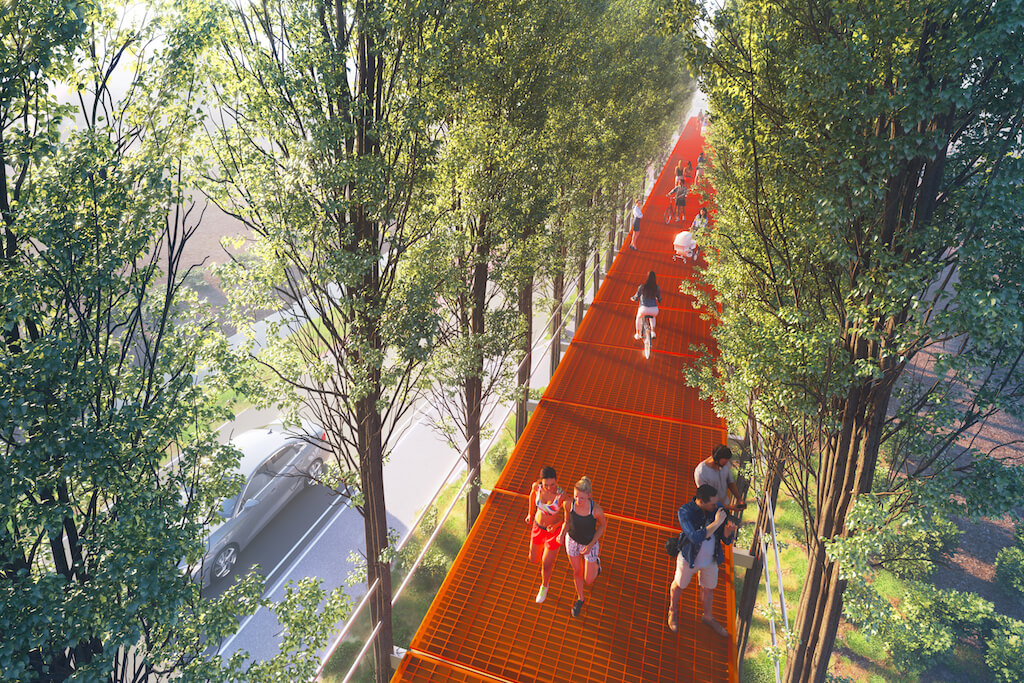Autumn Gear Guide
Find inspiration in our Gear Guide that will keep you out on your bike through wind or rain.
Download NowIn a move that shows significant creativity and love of cycling, an Italian NGO and a whizbang architecture firm are set to create an elevated pathway through the treetops dubbed The Tree Path as part of the 700-kilometer Vento cycle route. The sensor-augmented pathway leads to Sabbioneta, a UNESCO World Heritage Site in northern Italy, […]

In a move that shows significant creativity and love of cycling, an Italian NGO and a whizbang architecture firm are set to create an elevated pathway through the treetops dubbed The Tree Path as part of the 700-kilometer Vento cycle route.
The sensor-augmented pathway leads to Sabbioneta, a UNESCO World Heritage Site in northern Italy, and was developed in close collaboration with OLA, the leading experts in a construction technique that employs trees as architectural and structural elements.
International design and innovation office CRA-Carlo Ratti Associati, Office for Living Architecture (OLA), and non-profit organization GAL Terre del Po unveil The Tree Path, an elevated bicycle route that runs in-between trees, resting on two parallel rows of plants that act as pillars. Set in the Italian countryside, the project leads to Sabbioneta – one of the country’s best-known UNESCO World Heritage Sites – and explores sustainable mobility while blending the natural and the artificial. People can walk or cycle on a lifted platform amidst treetops, while sensors embedded within the greenery track environmental conditions in real-time.

“What if one day we could grow architecture like a tree?” said Carlo Ratti, founding partner at CRA, and director of the Senseable City Lab at MIT.
“We are still very far from that future, but we can start exploring the convergence between the natural and the artificial. We can use trees as elements of construction while leveraging the data from digital technologies to get a better understanding of the surrounding environment.”
CRA-Carlo Ratti Associati is an international design and innovation practice based in Turin, Italy, and New York City. It has teamed up with the consortium GAL Terre del Po, which aims to manage the Local Development Plan approved by the Lombardy Region for the European Programming period 2014-2020.
Construction of The Tree Path will use a technique called Baubotanik (botanic construction), by which trees can become ever-evolving architectural elements. Roughly 1,000 trees will be planted during the process, which over the course of the life of the pathway will grow and transform the pathway.

The Tree Path unfolds vertically on three different levels, rising up to six meters above the ground, bypassing road traffic and waterways.
The plan for the pathway is similar to another cycling route in Belgium.
The Tree Path will connect the VENTO Cycle Route, a 700-kilometer-long bicycle path that parallels the Po river across north Italy, with Sabbioneta, via the neighboring town of Casalmaggiore. Sabbioneta, located near the city of Mantua, was inscribed on the UNESCO World Heritage List in 2008 for its practical application of Renaissance urban planning theories.
The pathway incorporates digital sensors to measure multiple factors in the atmosphere, from air pollution to the health and growth status of individual trees. The sensors will also help ensure that all the living organisms along the path can respond to changing environmental conditions or structural loads – realizing a vision of an “Internet of trees”.
Find inspiration in our Gear Guide that will keep you out on your bike through wind or rain.
Download Now
Leave a comment